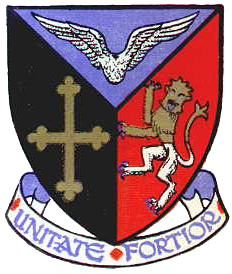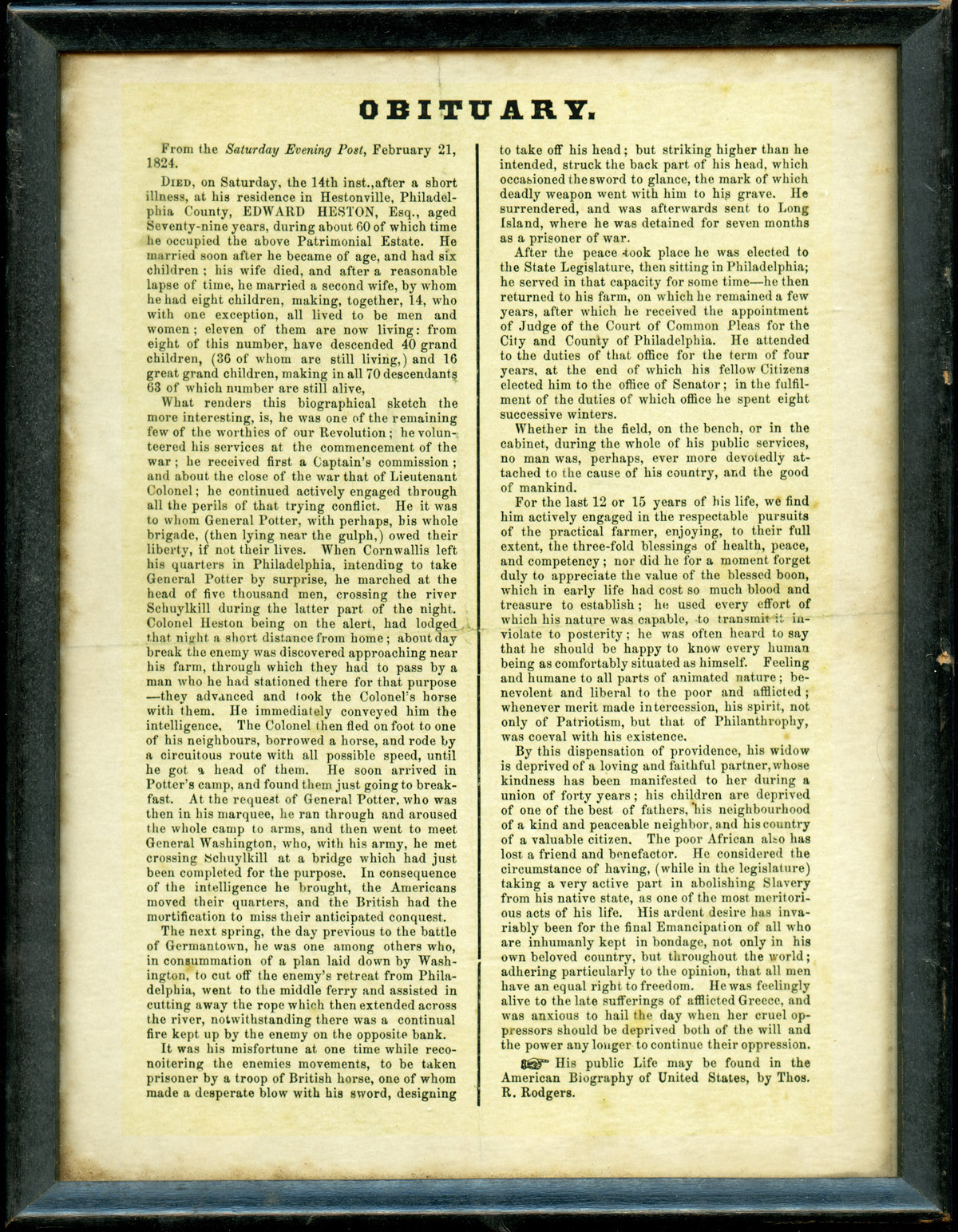Closely associated with the history of Hestonville is the family of the Hestons, after whom the district was named. This family came from a village also named after themselves, partly located in the parish of Heston and partly in the parish of Isleworth, in Middlesex, England. This district still exist and to-day bears the same name. It is about twelve miles west of London and the same east of Windsor Castle.
Until about the fifteenth century each person was distinguished only by his Christian name, with his occupation or the like added, as for example, "John, the smith." This afterwards became John Smith, and in the same way, John of Heston grew into John Heston. The name of Heston is Anglo-Saxon and signifies village or town. It is very old, dating back to the fifth century, when the three Teutonic tribes, the Jutes, the Angles and the Saxons, under Hengist and Horsa, invaded Britain, and after defeating the Celts. established themselves permanently in the island, at first along the coast and later in the interior. It was near the villa or parish of Heston at Kingston-on-Thames that the coronation of the Saxon kings was held. The stone on which they were crowned is preserved with religious care in its principal thoroughfare. This locality also has most interesting traditions of the wars of the Roses and of the Civil War. It was in the vicinity of Heston that Edmund Ironsides defeated the Danes under Canute, in 1016, and it was here that six martyrs were burned at the stake in 1558. In 1642 the Royalists under Prince Rupert defeated the Parliamentarians under Hollis on the green between Heston and Isleworth.
Such is the history and such are the surroundings of the place in Old England whence came the family name of Heston. There still remain near the banks of the Thames not far from London the ruins of a castle known as "Heston's Castle." Among those who voluntarily left England during the last half of the seventeenth century to seek a home in the wilds of America was Zebulon Heston, primogenitor of the family in America. The time of his arrival here has never been definitely ascertained, although it is generally believed to be about 1684, one year previous to the death of Charles II. He first settled at Barnstable Bay, Mass. This is attested in the town records of Eastham, in
the Province of Massachusetts, by the Town Clerk, John Paine, under date of May 31, 1815. In this document it is stated that he arrived there in 1684. He did not remain long in Massachusetts, but shortly removed to Hopewell, in what is now Mercer County, New Jersey. According to Raum's "History of New Jersey," he had attained prominence as a freeholder in that district before 1703 and was one of the four trustees of the first meeting house. In 1707 he sold his property in Philadelphia. Four years later he moved to Wrightstown, in Bucks County, as is indicated in Davis' "History of Bucks County." Here he changed from the Episcopal Church and became a Friend.
Zebulon Heston died in 1720, and his widow, eight years later, married Thomas Stackhouse. One of her children by her first marriage was Jacob Heston, who was born May 20, 1713. He married Mary Warner and was the father of three sons, Thomas, Edward and Jesse. Of these, Thomas, who was a colonel during the Revolution, was born April 4, 1753, and married Hannah Clayton, June 25, 1775. Together with Thomas Carpenter, grandfather of Judge Thomas P. Carpenter, he purchased the Senger Brothers' glassworks, in New Jersey. These became afterwards the Heston Glassworks, and the place afterward was named Glassboro.
Edward W. Heston, a brother of Thomas, was a Revolutionary patriot, holding a lieutenant-colonel's commission. He founded the village of Hestonville, now included within the corporate limits of the city. He was a member of the Pennsylvania Legislature, and for eight years a State Senator.
The original town plot of Hestonville comprised about one hundred acres, and previous to its consolidation with Philadelphia, formed part of Blockley township. The ground in course of
years has almost entirely passed out of the possession of the Heston family and is now almost entirely built up. Edward W. Heston died in 1824, aged seventy-eight years. He was father of fourteen children, eleven of whom were living at his death. Of these, only one is now alive, Mrs. Louisa Paxson, in her eighty-first year. She has, however, about twenty-five grandchildren living.
Another of the city's historic landmarks vanished in 1901 before the inexorable encroachment of
commerce. The Pennsylvania Railroad Company demolished, in its march of improvement, the house near the Fifty-Second Street Station, known as the Heston Mansion, and rails are now laid on the site of one of the earliest and most picturesque residential structures of West Philadelphia. The dwelling was erected in 1800 by Colonel Edward W. Heston. The logs that made the massive walls were from a house built more than two hundred years ago by John Warner on the site now occupied by Sweetbriar Mansion, in Fairmount Park.
The Warner house was the first house built west of the Schuylkill, and the land on which it was located formed part of a tract of 1,500 acres granted the owner by William Penn. A transcript of the transfer may be seen on the county records. In 1799 Colonel Heston, a grandson of Warner, tore down the original structure. The timbers were found in such an excellent state of preservation that they were utilized in the construction of another house the following year. The mansion was a fine structure of spacious dimensions, colonial in style and severely simple. Many famous persons were entertained within its hospitable walls. Its novel nooks were replete with romance and the shadows that lingered in its many rambling recesses were mellow with old memories.
The personal history of Colonel Heston is of unusual interest. He served on the staff of General Washington during the Revolution and saved the Continental Army from surprise by the British forces at Valley Forge. He had been a Quaker, but his martial spirit caused him to secede from that peaceful sect and, with others, to found the Society of Free Quakers. They built a church at Fifth and Arch streets, which still stands and has more recently been used by the Apprentices' Library. He was Judge of the Court of Common Pleas in 1785.
The Heston property was purchased by the Pennsylvania Railroad Company in 1872, from the estate of Isaac Heston. The price paid was $300 an acre. The last member of the Heston family to occupy the premises was W. D. Heston, of 750 North Forty-first street. When torn down the timbers were in a fair state of preservation, and the plaster which encased the walls, applied in 1800, was nearly intact.


























































